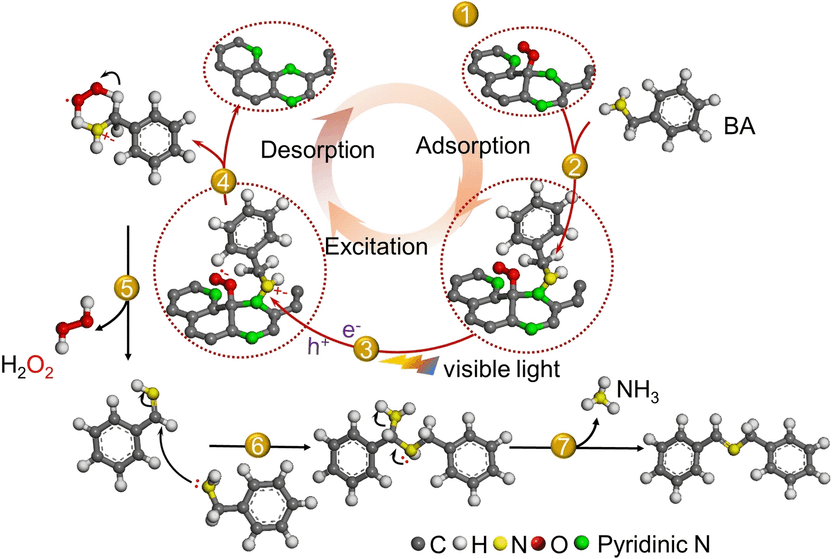Primordial Photoredox Catalyst
Nitrogen-Doped Graphite Catalyzes Reactions to Give Early Biomolecules
The sun as a source of energy, and catalysts to accelerate chemical reactions, were of critical importance in the emergence of the first biochemical molecules on Earth. A research team has now shown that a solid deposited from ammonia and methane plasma is capable of using light energy for amine-to-imine conversions. This process might have played an important role in the creation of the first biomolecules. The study has been published in the journal Angewandte Chemie.

(c) Wiley-VCH
Between three and four billion years ago, on primordial Earth, the first biomolecules were being formed prior to an explosion of life. These early chemical reactions, however, required catalysts. Xinchen Wang and a team of researchers from Fuzhou University in China have discovered that the primordial atmosphere itself could have served as a source for these catalysts.
Using methane and ammonia gases, which were most likely present in the hot gas mixture shrouding the world in the Archean age, the team used chemical vapor deposition to produce nitrogenous carbon compounds as possible catalysts. They found that, in a reaction chamber, molecules condensed out of an ammonia and methane plasma onto a surface, quickly growing to form a solid nitrogenous carbon polymer similar to nitrogen-doped graphite.
As the team observed, the irregularly incorporated nitrogen atoms gave this polymer catalytically active sites and an electron structure that enabled it to be excited by light. The researchers then turned to proving the extent to which the substance could reduce or oxidize other substances under the effect of light.
One of the most significant reactions on early Earth may have been imine formation. Imines, also referred to as Schiff bases, are a dehydrogenated form of amines, compounds composed of carbon, nitrogen, and hydrogen. Many chemists assume that, on primordial Earth, imines may have served in the formation of the first hereditary molecules of ribonucleic acid (RNA). Wang and his team could show that their plasma-generated catalyst can convert amines to imines using nothing other than sunlight.
The team says that carbon nitride-based photocatalysts, such as the plasma-generated substance, could have lasted for millions of years and produced important chemical intermediates. In addition, they could also have served as a source of carbon- and nitrogen-containing compounds. By demonstrating that it is possible to produce such a catalyst using only the gases and conditions present in the atmosphere of early Earth, the study sheds new light on the possible evolutionary path taken by biomolecules.
Original publication
Other news from the department science

Get the life science industry in your inbox
By submitting this form you agree that LUMITOS AG will send you the newsletter(s) selected above by email. Your data will not be passed on to third parties. Your data will be stored and processed in accordance with our data protection regulations. LUMITOS may contact you by email for the purpose of advertising or market and opinion surveys. You can revoke your consent at any time without giving reasons to LUMITOS AG, Ernst-Augustin-Str. 2, 12489 Berlin, Germany or by e-mail at revoke@lumitos.com with effect for the future. In addition, each email contains a link to unsubscribe from the corresponding newsletter.





















































